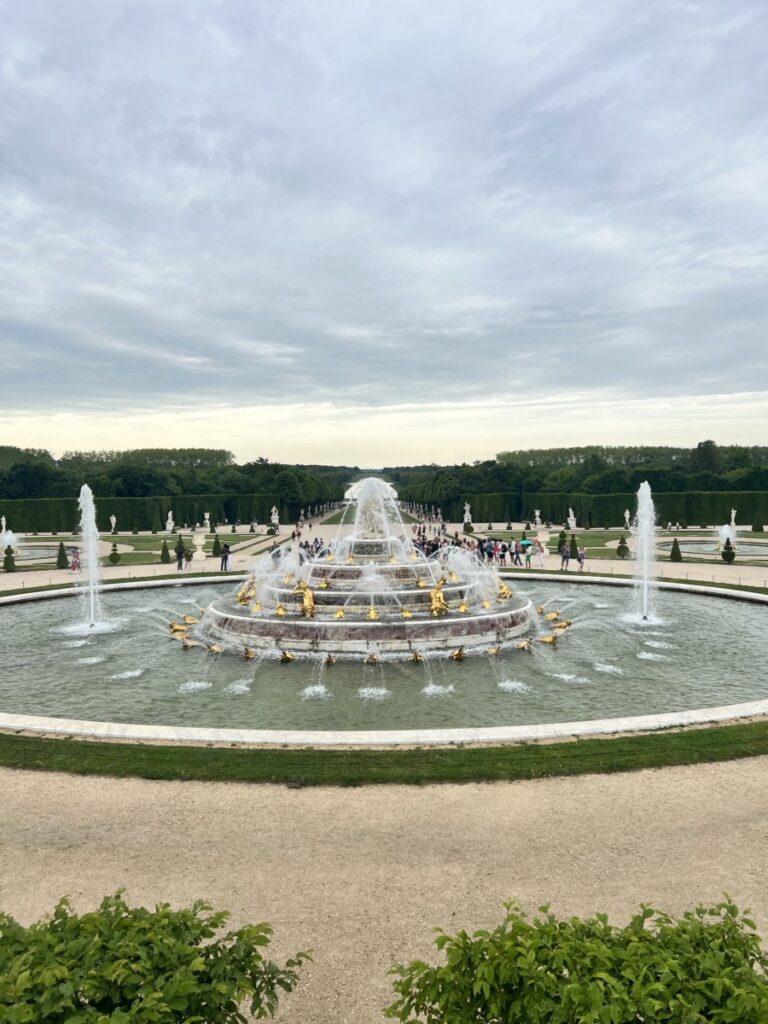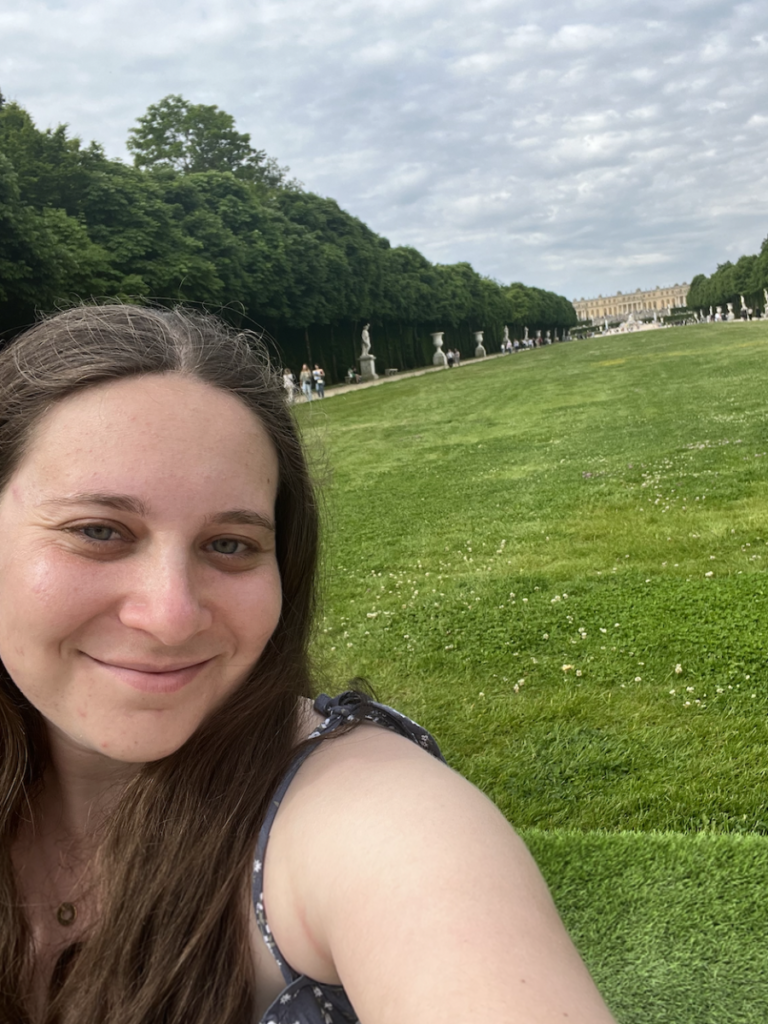On Sunday, May 22nd, Cynthia, Lauren, Sam, and I visited the Palace of Versailles, a little over an hour outside Paris. The palace served as a home for royals from the early 1600s until the French Revolution. The most notable residents were King Louis XVI and his wife Marie Antoinette, the last royals before the Revolution. They spent large amounts of money on themselves and their residence while the people of France were in economic crisis, contributing to their unpopularity among the people and fueling anger towards the monarch.
On our visit, we were unable to enter the palace so we toured the gardens instead. While we were disappointed to not see the palace, the acres upon acres of gardens kept us busy. We were also fortunate enough to see some of the fountains in action! After walking around and enjoying the greenery, we got dinner in the area and took the train home.

While walking through the gardens, a topic we continuously discussed was what was the purpose of this? We understood it was a home for the royals but why was it necessary to build such extravagant gardens? Was it for the king to show off his wealth? Did he build it simply because he could? This got me thinking about the neuroscience behind wealth, status, and dominance.
A review of the neuroscience of social class (Varnum & Kitayama, 2017), explains a number of differences in those of high versus low socio-economic status (SES). One difference they mentioned was threat sensitivity. Those of lower SES had higher vigilance to threats. This was seen behaviorally and biologically. From the neurobiology perspective, studies found that those of a lower SES had greater amygdala activation when shown an angry face. There was no difference in amygdala activation when shown a neutral face. They also saw greater reactivity in the dorsomedial prefrontal cortex (dmPFC) in those from lower SES when given negative social feedback. From this, it is seen that the increased threat sensitivity of those from a lower SES extends to both physical and social threats.

Being monarchs, it feels safe to say that Louis XVI and Marie Antoinette were of high SES. As such, based on the above research, it can be inferred that they had decreased threat sensitivity. I thought this was interesting as they were the royals who fell during the revolution. Did the neurobiological effects of their high status make them oblivious to the threat their actions posed to themselves?
Reference:
Varnum, M. E., & Kitayama, S. (2017). The neuroscience of social class. Current Opinion in Psychology, 18, 147–151. https://doi.org/10.1016/j.copsyc.2017.07.032

Great post! I would say that we can’t necessarily infer that they had “decreased” threat sensitivity, but that those low on the SES scale likely deal with chronically stressful situations that lead to an elevated threat response. Those high on the SES scale might feel more “safe” while those who are low on the scale might not, but it is hard to say that experiencing wealth decreases your stress response.
In evaluating wealth, I would be interested to see what literature is out there on reward systems. There likely isn’t much out there, but would be interesting to see if high amounts of wealth influence your perception of reward.